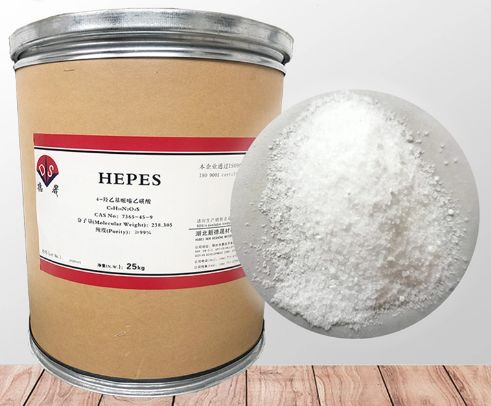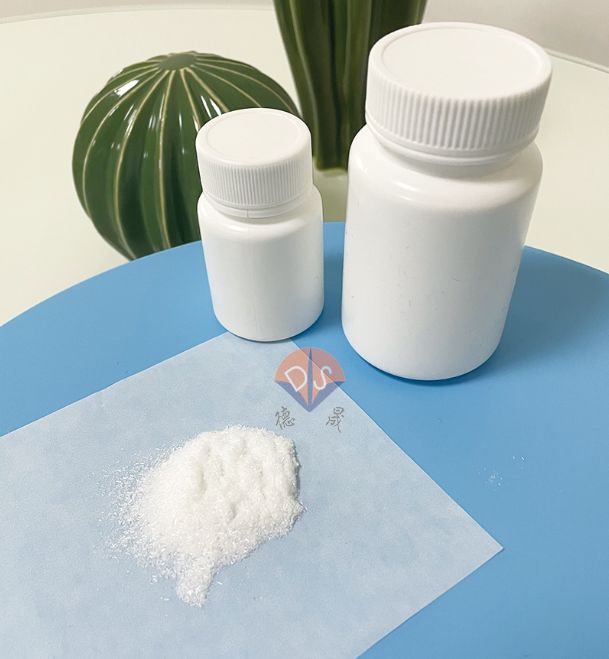What components are included in the PCR reaction system and what buffer is used
Release time:
2025-04-28
In the field of modern molecular biology, from disease diagnosis to biological research, the presence of PCR reaction systems is ubiquitous. Accurate genetic testing, rapid pathogen screening, and in-depth gene function research all rely on the help of PCR reaction systems. In this system, components such as templates, primers, substrates, DNA polymerases, and PCR buffers work together and play key roles. Together, they construct the core architecture of PCR technology to ensure that every amplification reaction can be accurately carried out.

(HEPES buffer powder)
1、 Template: PCR reaction starting material
Template is the starting material for PCR reaction, which can be a variety of DNA sources such as genomic DNA, plasmid DNA, RNA, total RNA, etc mRNA、tRNA、rRNA、 Virus RNA, etc. But not all DNA or RNA can be successfully used for PCR amplification, it needs to meet two important conditions. One is that the purity should be high, and the presence of impurities may interfere with the PCR reaction process. When extracting DNA from blood samples for PCR diagnosis of whether patients carry mutated genes, if the extracted DNA is mixed with proteases, proteases may degrade the DNA, causing template damage and preventing amplification; The second is that the template concentration should not be too high, as excessive concentration may cause inhibitory effects, making PCR reactions difficult to carry out.
2、 Primers: specificity basis
Primers are a pair of artificially synthesized oligonucleotide sequences that complementarily bind to two template DNA. One of them is called an upstream primer, and the other is a downstream primer. Primers play a crucial role in PCR specific reactions, and the specificity of PCR products largely depends on the degree of complementarity between primers and template DNA. As long as we know any template DNA sequence, we can design complementary oligonucleotide chains as primers based on it. When conducting gene cloning experiments, researchers design primers based on the two end sequences of the target gene, and use PCR technology to amplify the target gene in vitro, laying the foundation for subsequent gene function research and other work. The design and selection of primers need to be approached rigorously. Only primers that are highly complementary to the template can accurately guide PCR reactions and achieve precise amplification of specific DNA fragments.
3、 Substrate: amplification material
DNTP includes dATP dTTP、dGTP、dCTP, They are the raw materials for synthesizing new DNA strands in PCR reactions. DNTP solution is acidic and needs to be prepared at a high concentration before use. Then, adjust its pH to 7.0-7.5 using a buffer solution of 1mol/L NaOH or 1mol/L Tris HCl to ensure that it works in a suitable acid-base environment. In order to prevent repeated freeze-thaw cycles from affecting dNTP, it is usually packaged in small quantities and stored frozen at -20 ℃. The general storage concentration is 10mmol/L, and each component is prepared in equal quantities. In PCR reactions, the final concentration of dNTP is generally between 20-200 μ mol/L. The control of concentration is crucial. If the concentration of any one dNTP is different from the others (too high or too low), it will disrupt the balance of the reaction, cause mismatches, and result in errors in the amplified DNA sequence.
4、 DNA polymerase: amplification efficiency
The enzymes used in PCR reactions mainly come from two sources: Taq and Pfu, which are derived from two different thermophilic bacteria. Taq enzyme has high amplification efficiency and can quickly amplify target DNA fragments in large quantities. In some experiments that require high amplification speed, such as rapid diagnosis of certain infectious diseases, Taq enzyme can obtain sufficient amplification products in a short period of time, providing timely basis for diagnosis. However, the disadvantage of Taq enzyme is that it is prone to mismatches, which may result in errors in the amplified DNA sequence. Pfu enzyme, on the other hand, has relatively weak amplification efficiency but has error correction function, which can to some extent correct errors that occur during the amplification process and ensure the accuracy of the amplified DNA sequence.
5、 PCR buffer: guarantee for amplification
The buffer system plays an important role in maintaining a stable pH environment in PCR reactions. Common buffer systems include HEPES or MOPS buffer systems. HEPES buffer has good buffering capacity and can resist acid-base changes caused by the reaction during PCR reaction, maintaining the pH stability of the reaction system. Under high-temperature PCR reaction conditions, HEPES can stably act as a buffer, ensuring that enzymes such as DNA polymerase remain active in a suitable pH environment and smoothly carry out DNA amplification reactions. As a professional manufacturer of biological buffer agents, Hubei Xindesheng Company produces HEPES, MOPS and other buffer products with high purity and stable performance. After multiple quality inspection processes, the buffer quality of each batch is ensured to be uniform, providing reliable buffer protection for the PCR reaction system.

(MOPS buffer raw material)
Each component in the PCR reaction system is indispensable, as they interact with each other to jointly complete the amplification task of DNA. As an important part of it, the rational selection and optimization of buffer solution components provide a solid guarantee for the accurate conduct of PCR reactions. Hubei Xindesheng Company has contributed to the widespread application and development of PCR technology with its reliable buffer products. If you have any purchasing needs, please feel free to contact us at any time!
News
Contact details
Contact number
Address: C8, Guanggu United Science and Technology City, Ezhou City, Hubei Province
Fax:0711-3704 589
Follow us



